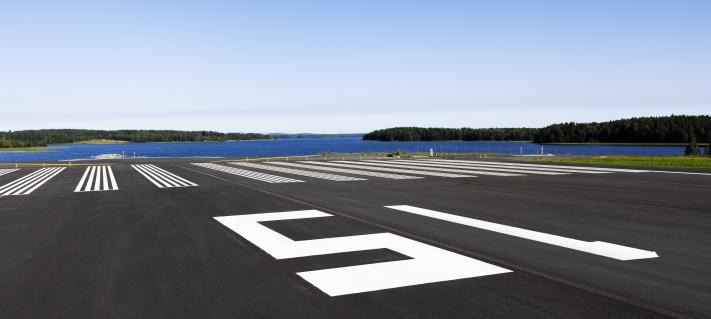Replacing kerosene with fossil-free propulsion, i.e. fuel, electricity and hydrogen made from renewable raw materials, plays a key role. None of these alone will solve the future of flying; instead, a hybrid model is likely to be used. Different forms of propulsion will be used in parallel.
At the moment, apart from fossil kerosene, it is only possible to operate long-distance flights and fly large passenger volumes with renewable fuels.
It would be relatively easy to replace kerosene with renewable fuel. It does not require much investment in the distribution infrastructure at airports or technical changes to aircraft.
In practice, the implementation of renewable fuel still faces challenges. The raw material is not readily available and there is not enough capacity available for industrial production. Its adoption has also been slowed down by high prices.
Hydrogen offers significant potential for long-distance flights and the propulsion of large aircraft. Solutions for hydrogen storage and use still require a lot of development work.
At Finavia, we support the development of electric aviation as one of the solutions.
According to a report published by the Finnish Transport and Communications Agency Traficom in spring 2022, it is likely that the timetables announced by aircraft manufacturers for the introduction of electrically powered aircraft to the market are optimistic and that the actual scaling of electric aviation will begin in the early 2030s.
Due to the charging capacity of the batteries, electric aircraft are best suited to short distances of about 200–400 kilometres and small passenger numbers. For example, flight schools could be good user groups.
New forms of propulsion are being developed intensively all the time. Finavia is involved in several projects in order to promote the green transition in the aviation industry. Change does not happen overnight, because in aviation, development and safe deployment always take time.
Carbon emissions must be drastically reduced throughout the entire value chain of air traffic, and this must be done in several ways. Emissions from air traffic can be reduced by more efficient flight procedures and use of airspace, by flying full aircraft and by reducing the environmental impact of airports.
In Finland, Finavia, together with aviation industry operators, has shortened taxiing distances and developed landing methods. Thanks to this development work, fuel consumption and emissions have been reduced. More than 70 per cent of landings at Helsinki Airport are made using the green method of continuous descent approach.
Our climate programme, launched almost 15 years ago, produced results in 2017, when Helsinki Airport achieved carbon neutrality. All our airports have been carbon-neutral since 2019. Emissions are mainly generated from heating and vehicle fuel consumption. Our next target is net zero emissions.
Accelerating climate change requires measures from everyone in the aviation industry. Every action, no matter how small, counts as we move towards more sustainable air travel.
Read more:
Jani Jolkkonen: Funding flights with public subsidies is expensive and causes emissions.



